After our week of summer, it turned cold and very windy. But spring is always inexorable, although slow at times. Seems like me have mild winters and cold springs these days. Anyhow, the ice started to go off the pond.
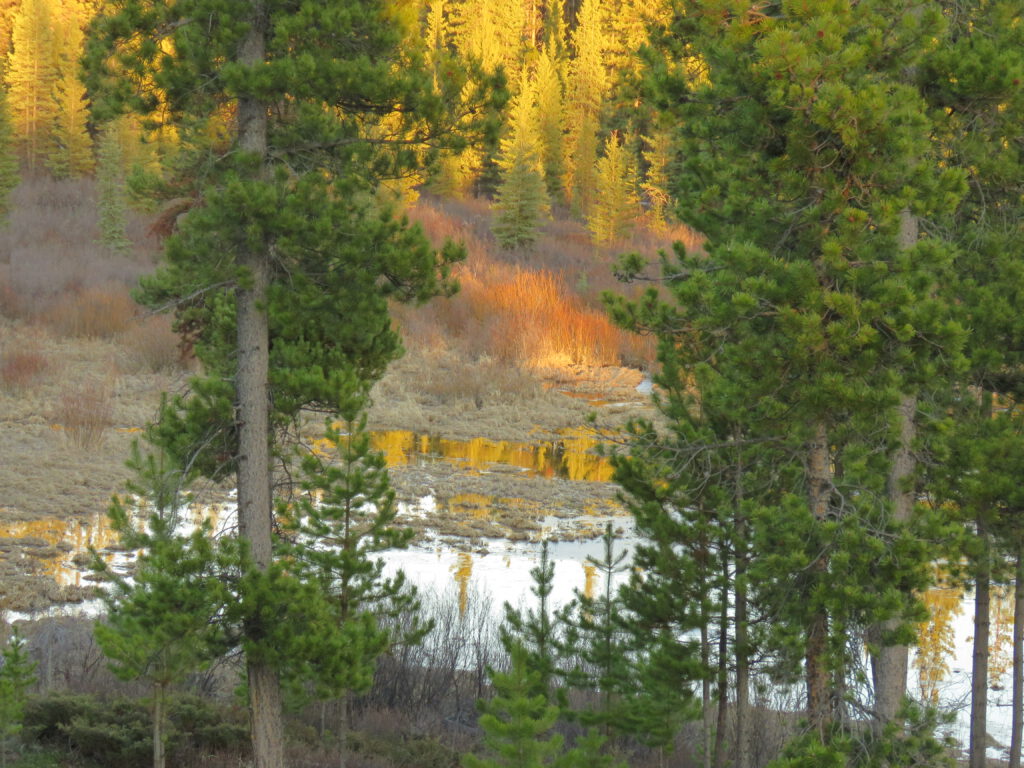
And soon the first ducks came along. A pair of hooded mergansers. The male looks like a cartoon character with his crest up.
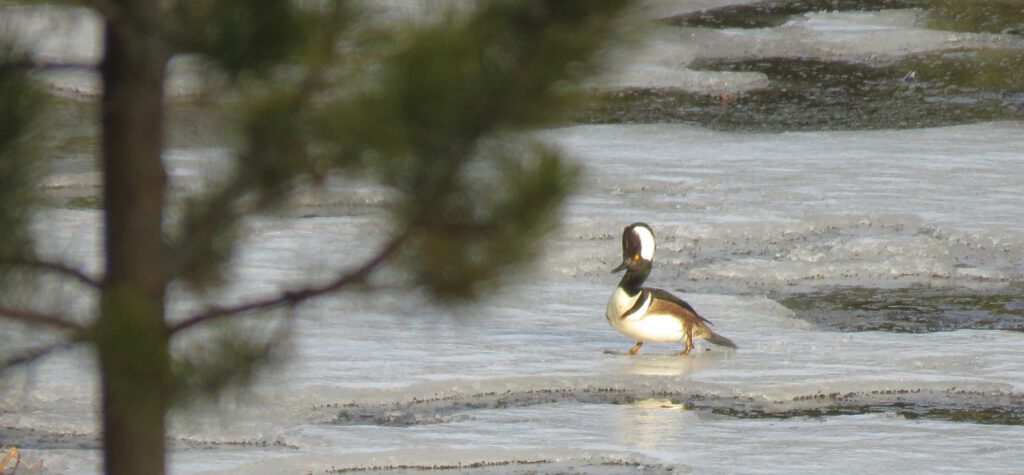
Here he is with his lady friend.
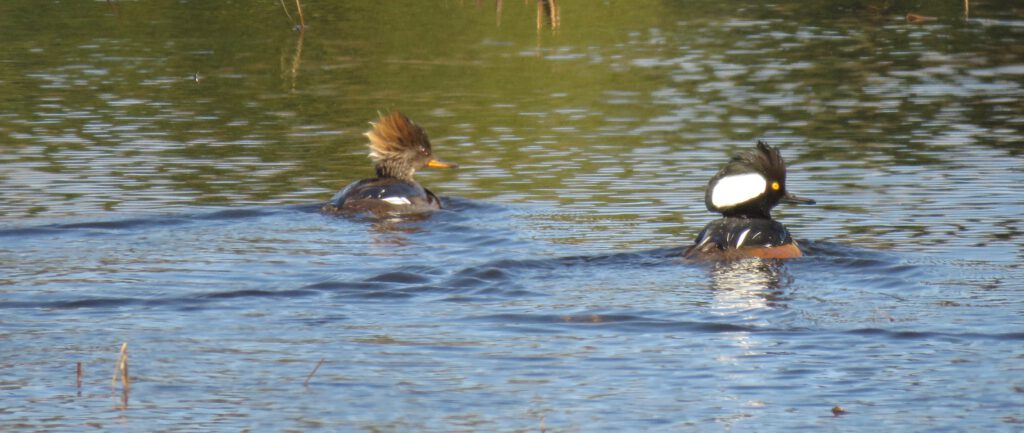
The sky has a different look in spring.
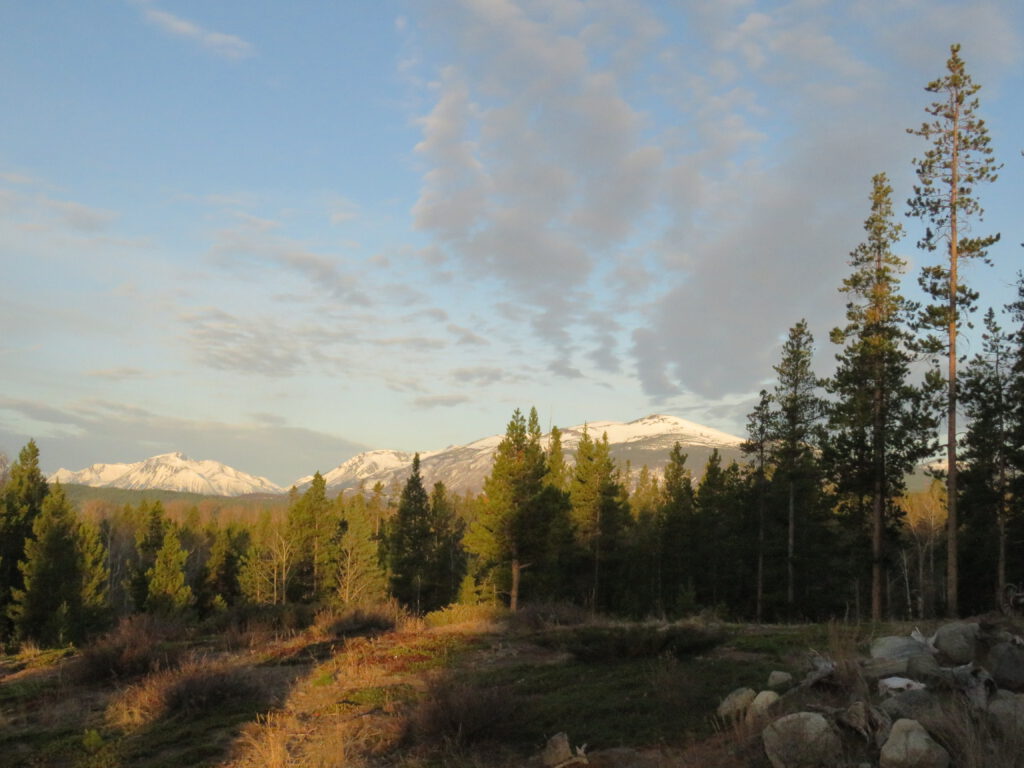
Just past full moon early May.
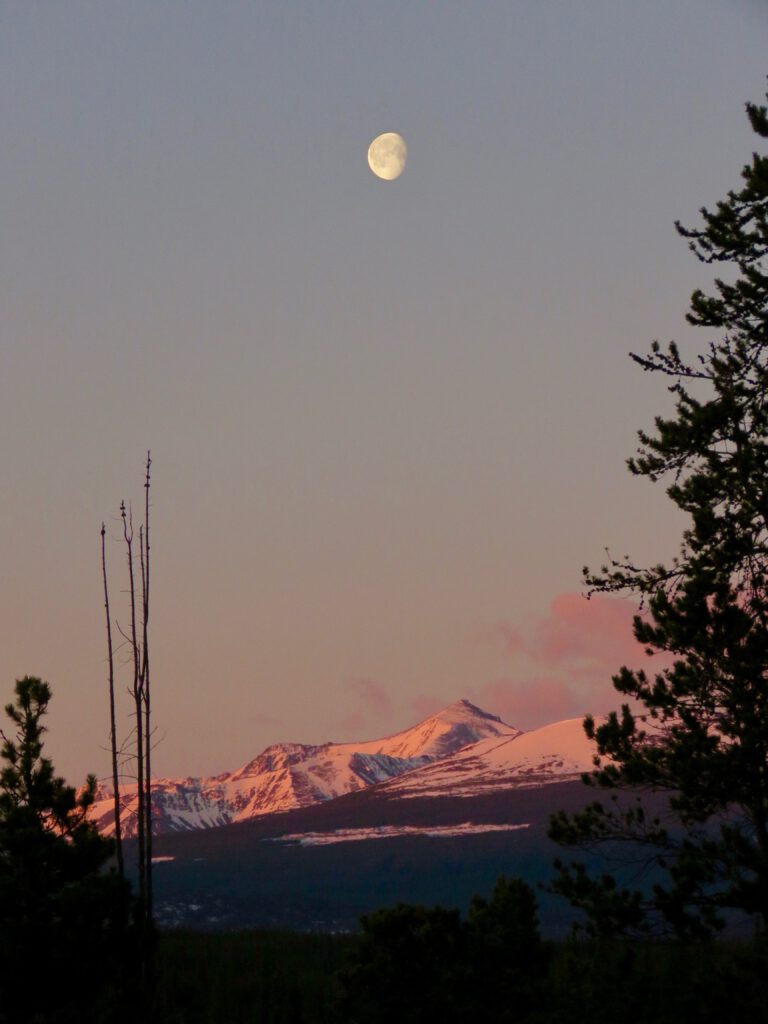
By now the pond was fully open and various ducks were jockeying for place. Barrow’s goldeneye.
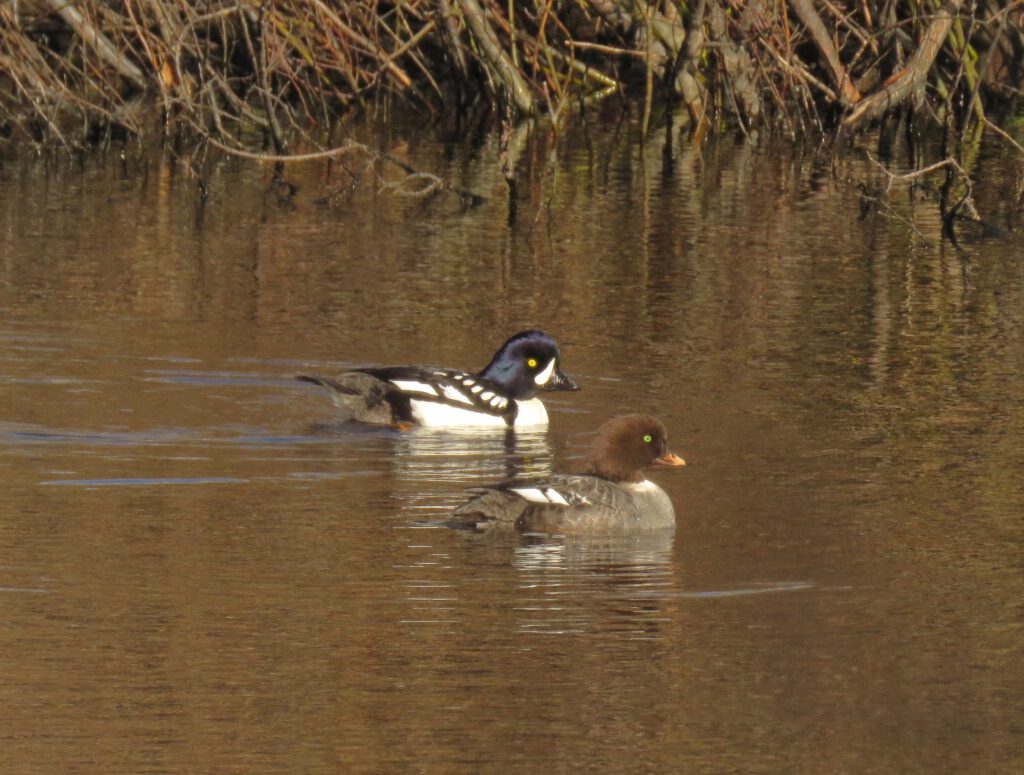
Two male ringnecked ducks
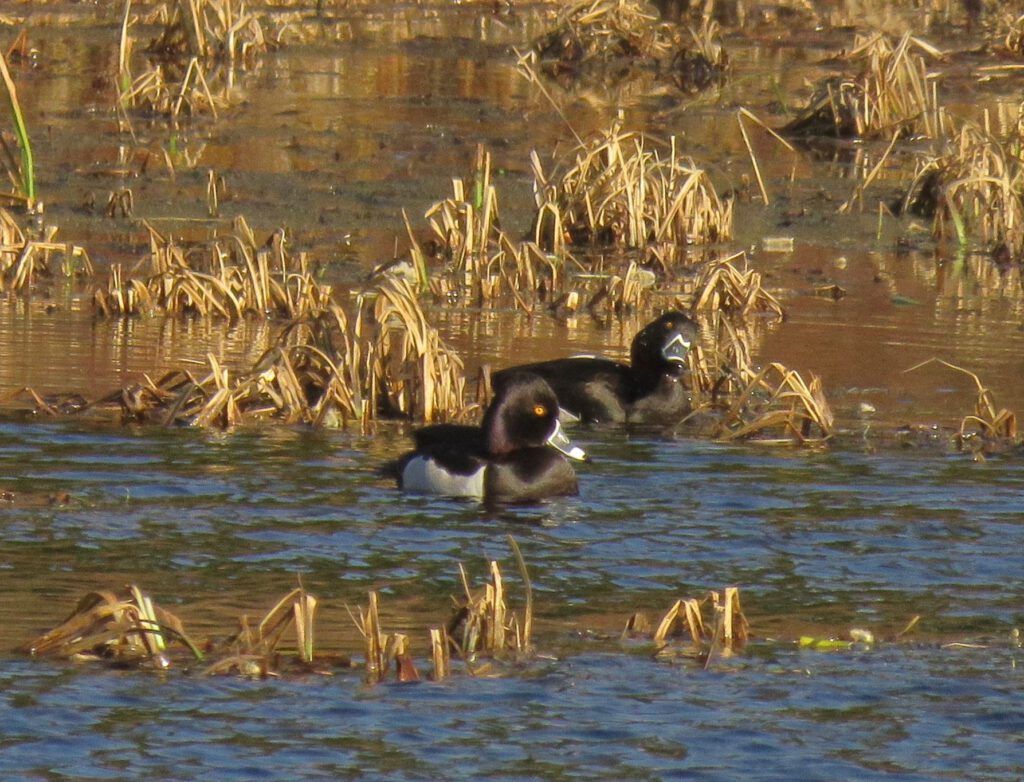
Green-winged teal.
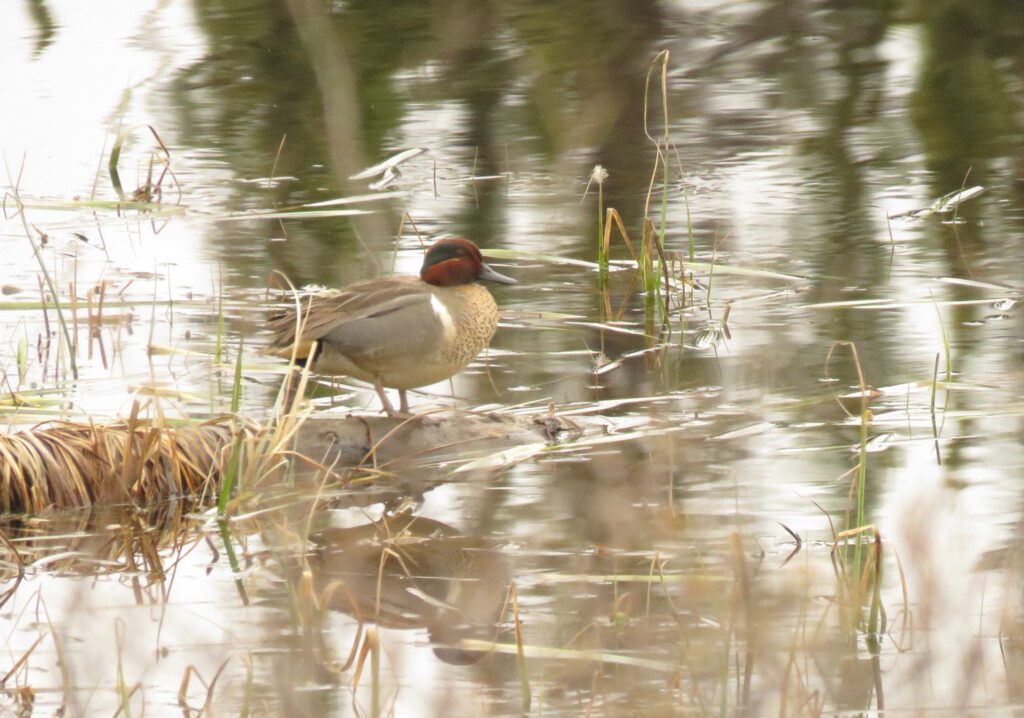
And a real surprise – a bird I had never seen before. A horned grebe.
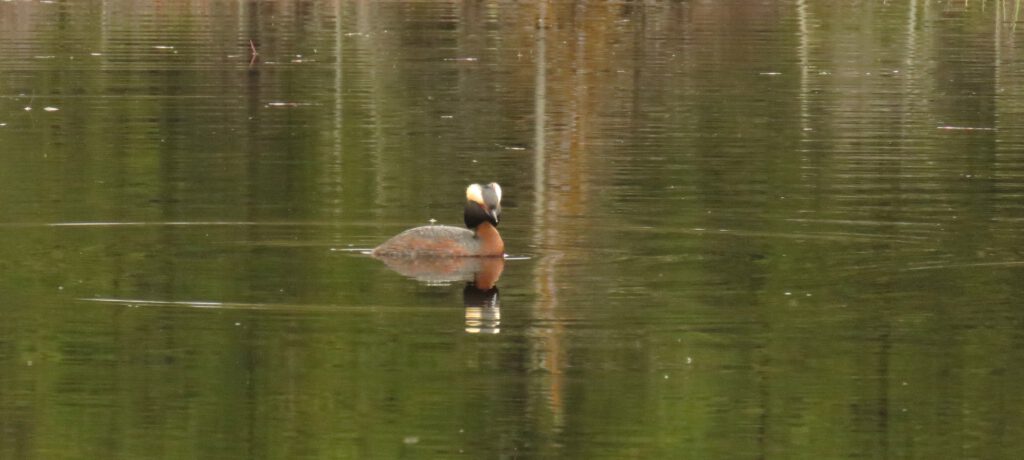
At the feeder table, birds were coming and going in their usual spring rush. A rare visitor for me was a nuthatch. He did not seem to mind the bigger birds. (That’s a female redwing blackbird on the table.)
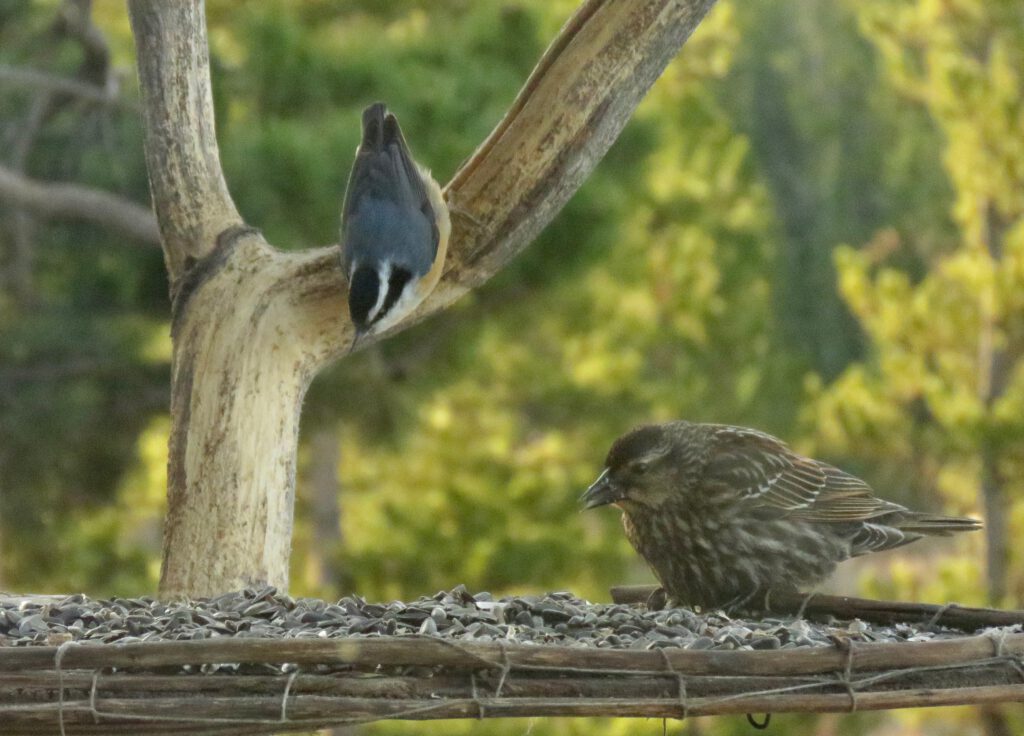
A mix of birds; a gaggle of evening grosbeaks and two female purple finches. (excuse the dirty window!)
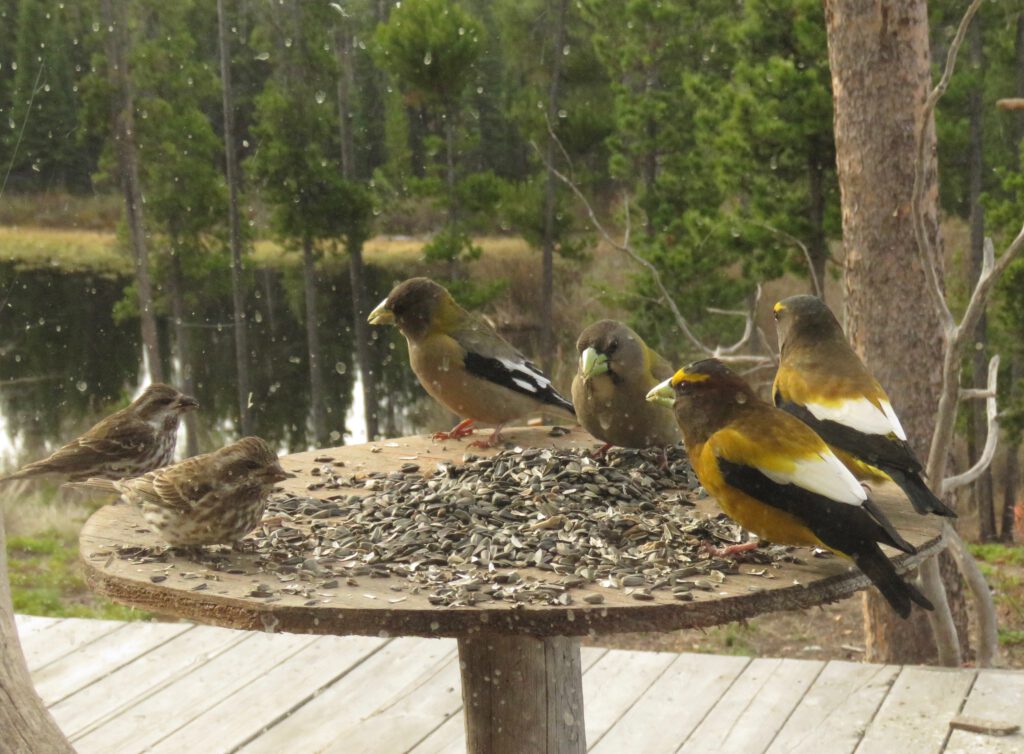
One afternoon I was surprised to see three eagles circling the lake. These birds are around all the time but not commonly seen here – their preferred home is the Coast. One adult male (smaller than female) hovered intently for a while, then it and two immatures took turns in swooping towards the water. I have seen fish in the pond sometimes, but it became apparent that they were targeting a duck. A Barrow’s goldeneye.
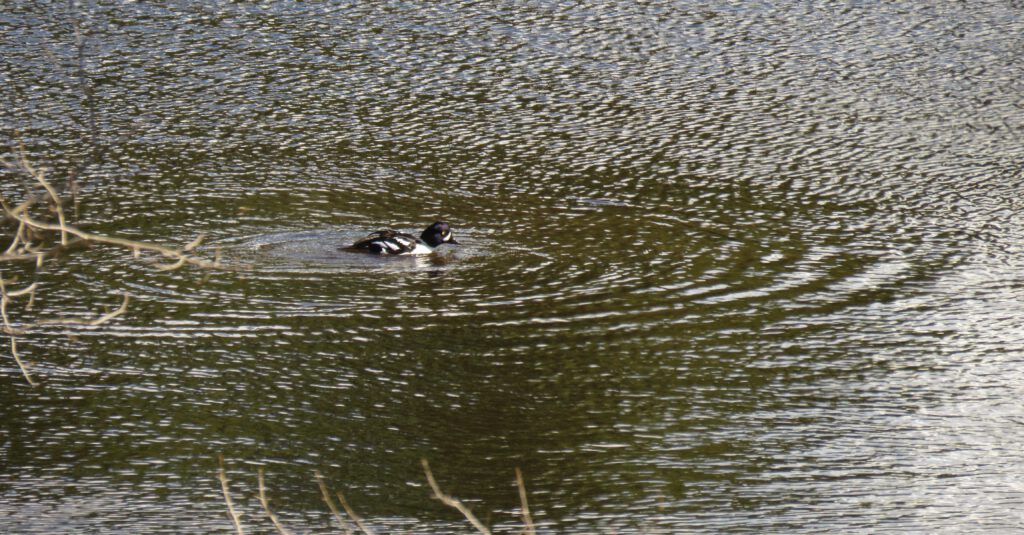
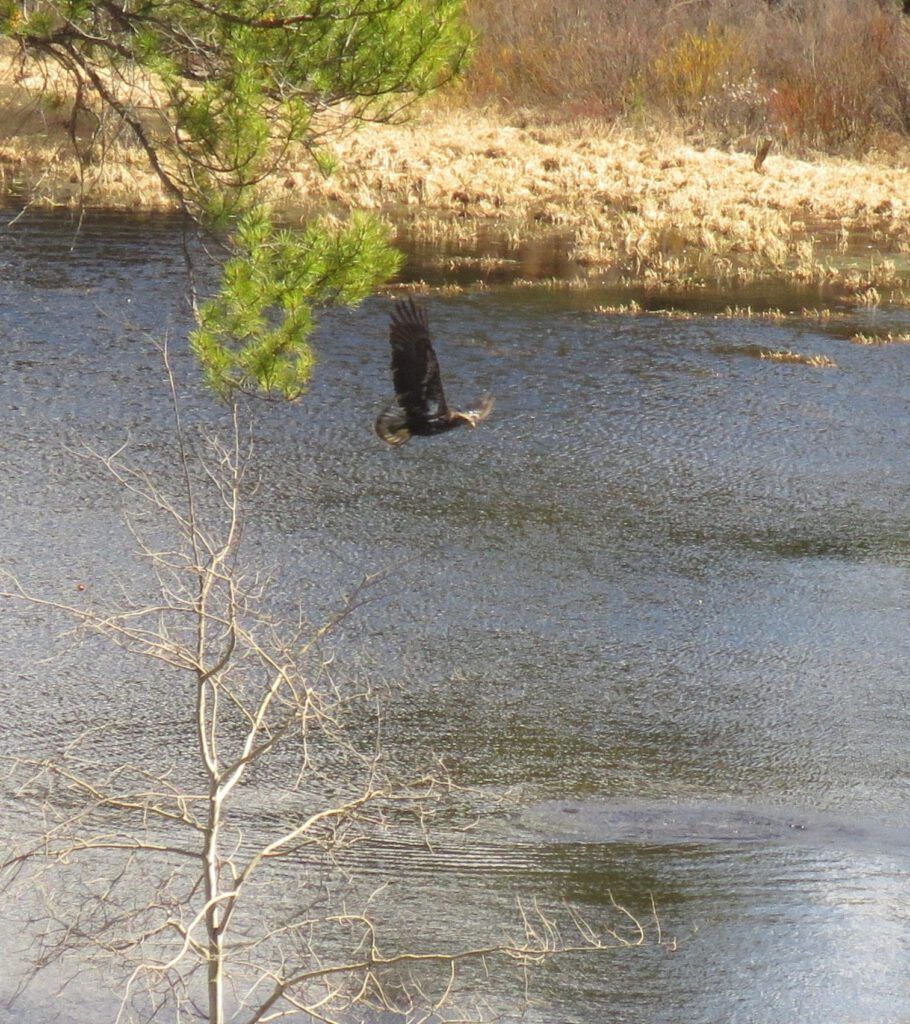
That is not a tree branch upper left – it is an eagle swooping in.
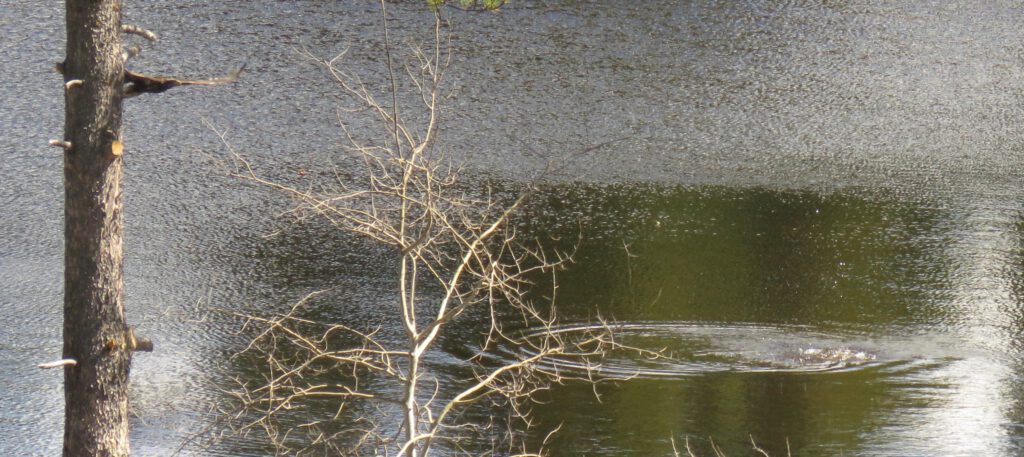
The duck dived repeatedly and eventually the eagles flew away. But a friend at Pyper Lake (one and half hours’ east of here) said she has twice seen eagles bombing ducks and both times the ducks were caught and eaten. I’ve seen them attack ducks and other birds before, but only for the fish they carried.
Soon the first dandelions popped out.
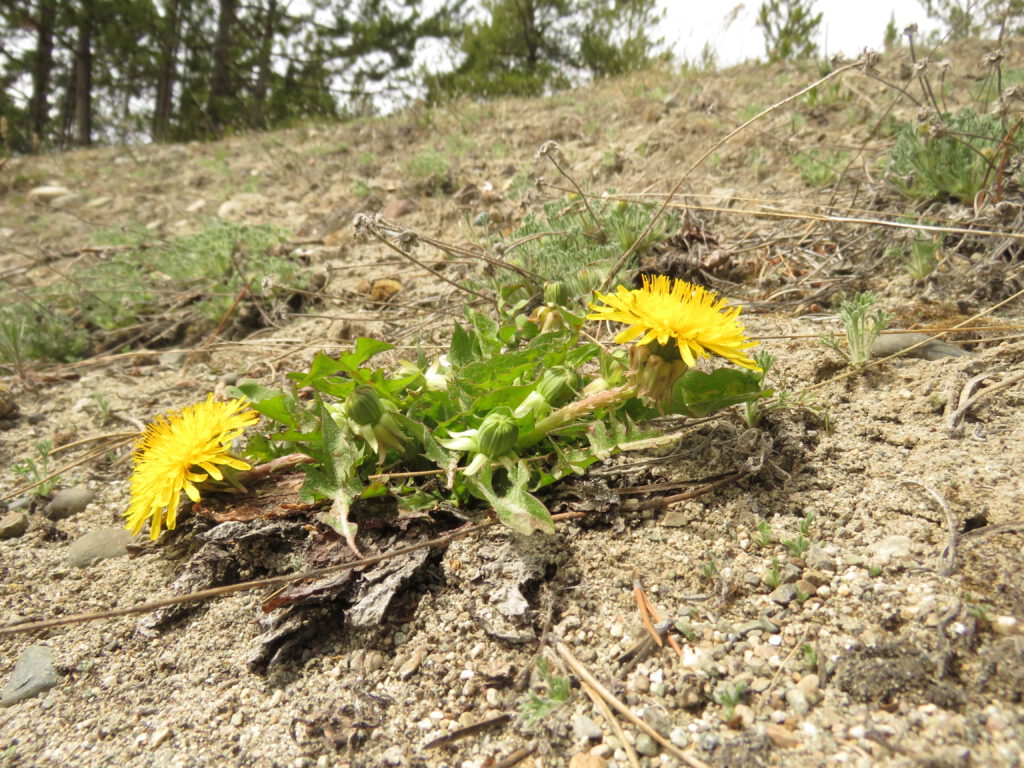
And hard on their heels, the first bears. This full grown cub was still with his mum but would leave before long.
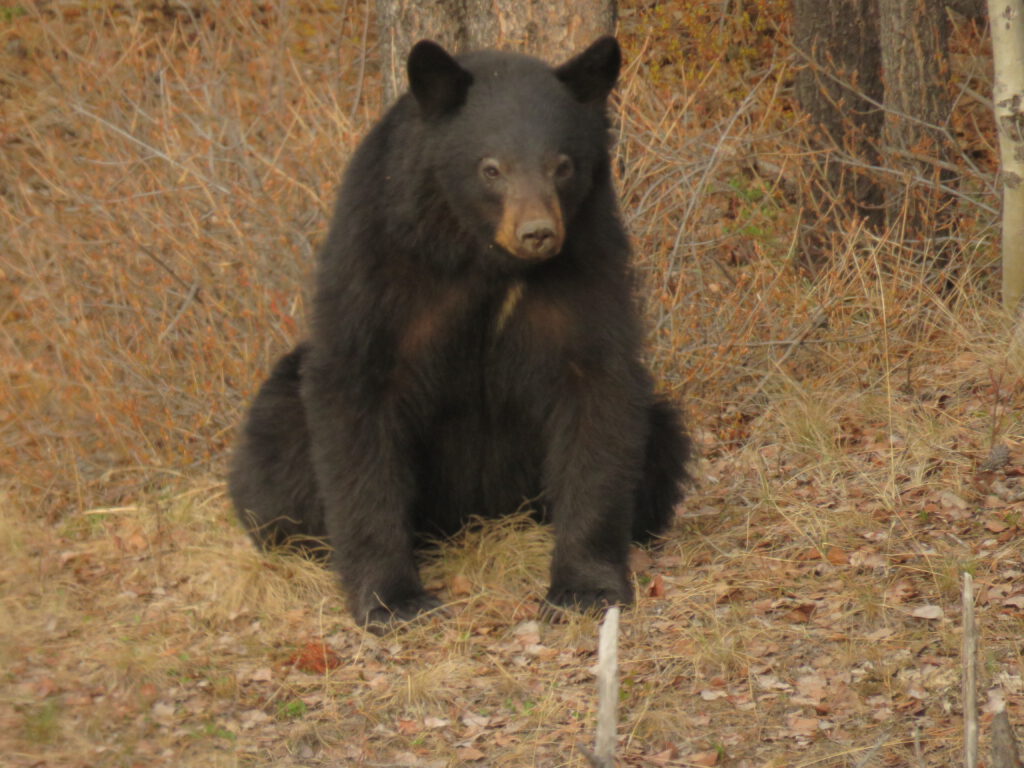
His mum was in poor condition; either an injury or a skin complaint. She was eating fit to beat the band.
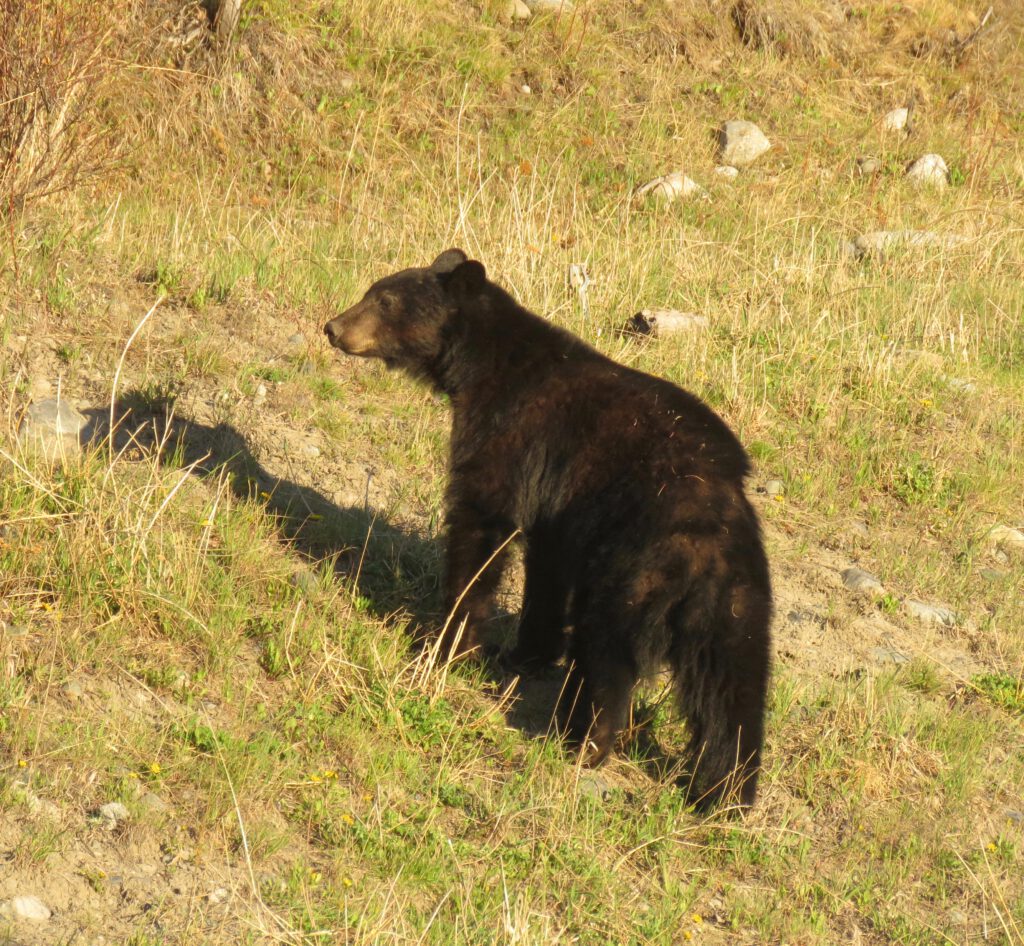
Now here is the reason I have been too busy to post of late. I got an email from a friend, Igor, who’s current job had fallen through and could he come and help me. The volunteer sites are dead this year – last year I had some because they were trapped in Canada when the covid restrictions started, but this year no one is moving. He was to arrive the next day. This was great news as Igor was very skilled and a fast worker, but I had to totally restructure what I was doing. Although Igor worked on his own most of the time, I had to find him tools, discuss projects, show him where to work, cook extra food, and so on. First he started on the firewood.
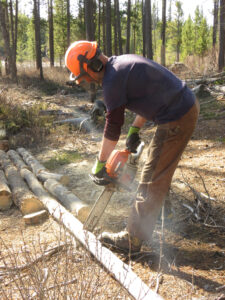
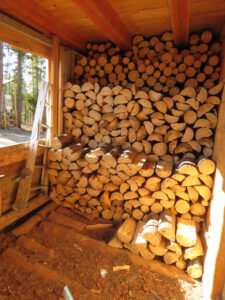
Then my truck broke down. I had it towed to town. So he started on the next project, which was to make the guest cabin roof squirrel proof. He first removed the metal.
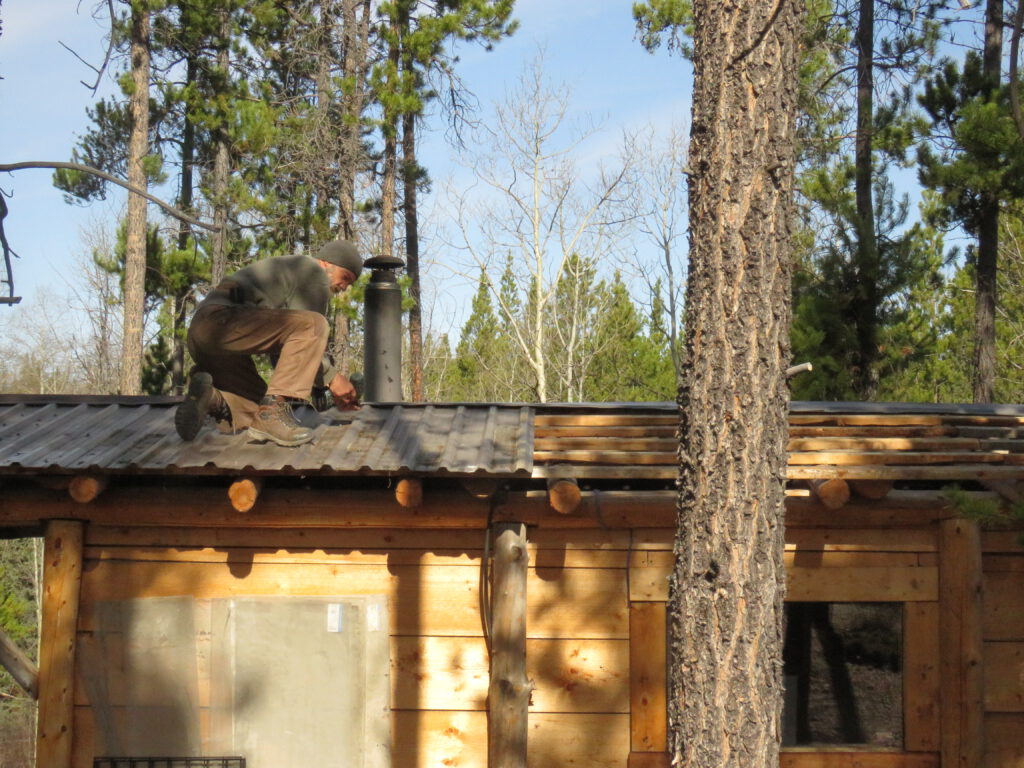
The space underneath was full of squirrel nests, and mushroom collections. A terrible fire hazard especially as the debris was close to the chimney.
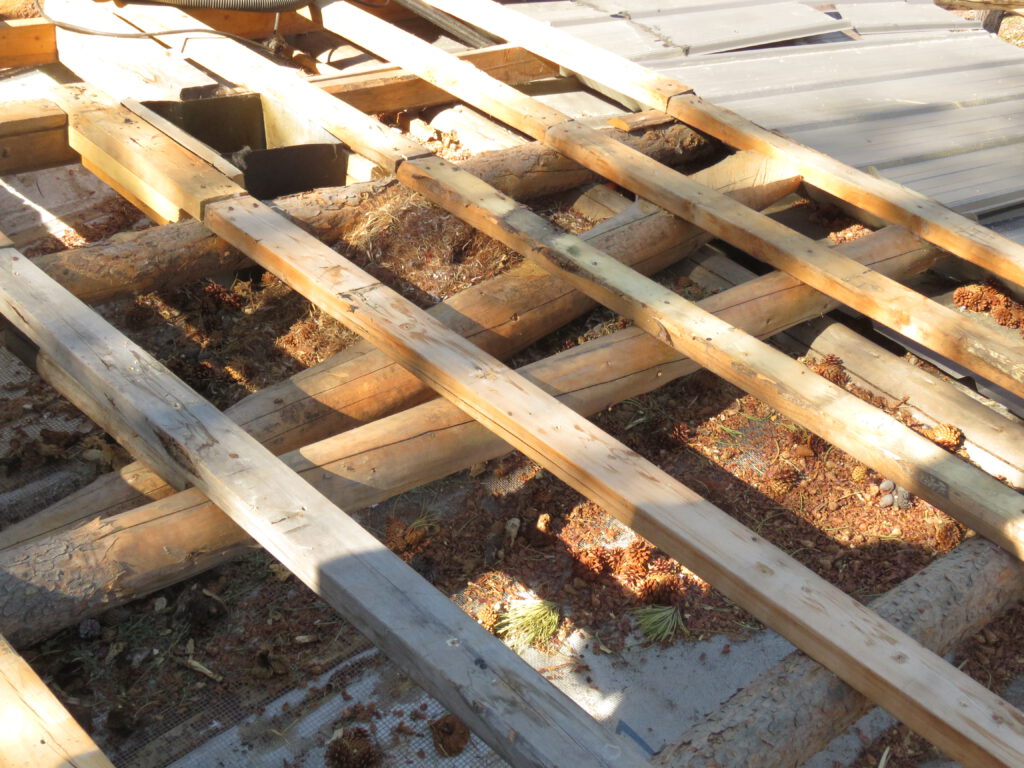
The building had originally been constructed as a trailer roof and was far from square . So the next job, building a storage lean-to, required some finesse.
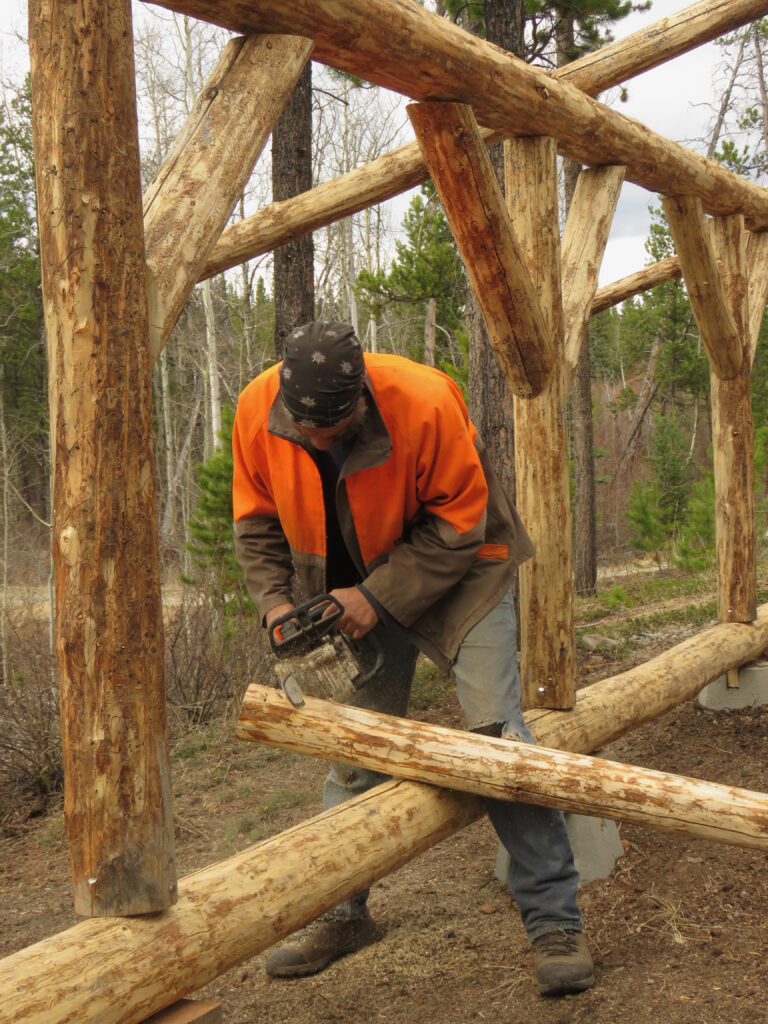
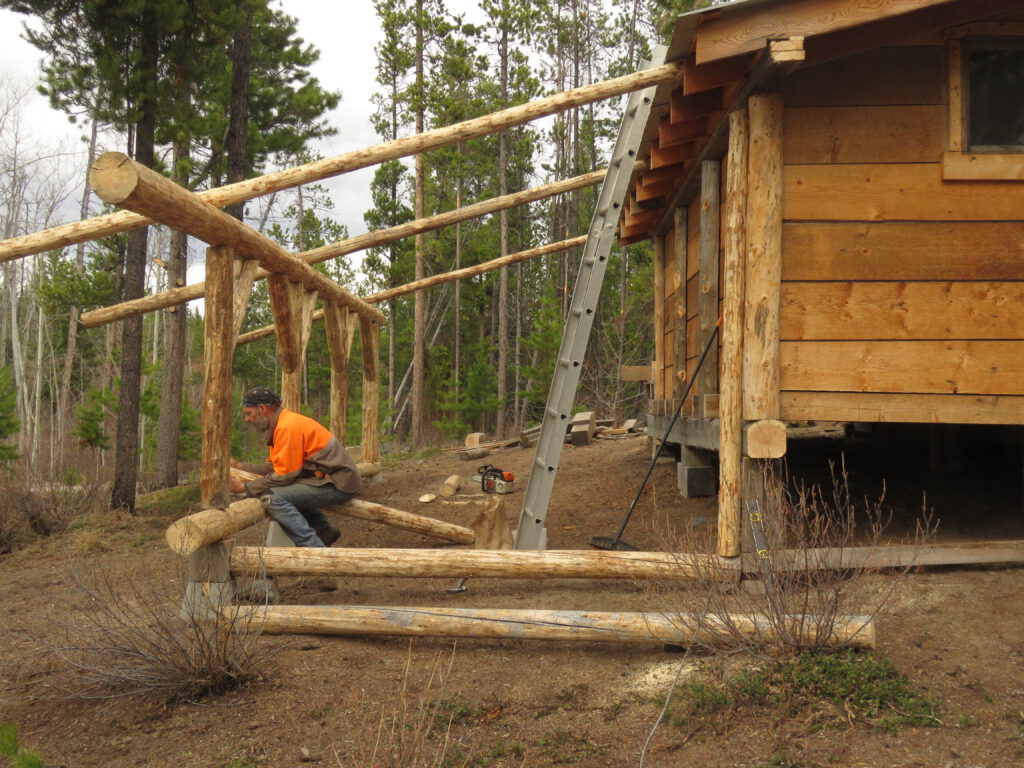
The big gap below the cabin would all be filled in, making it much more fireproof.
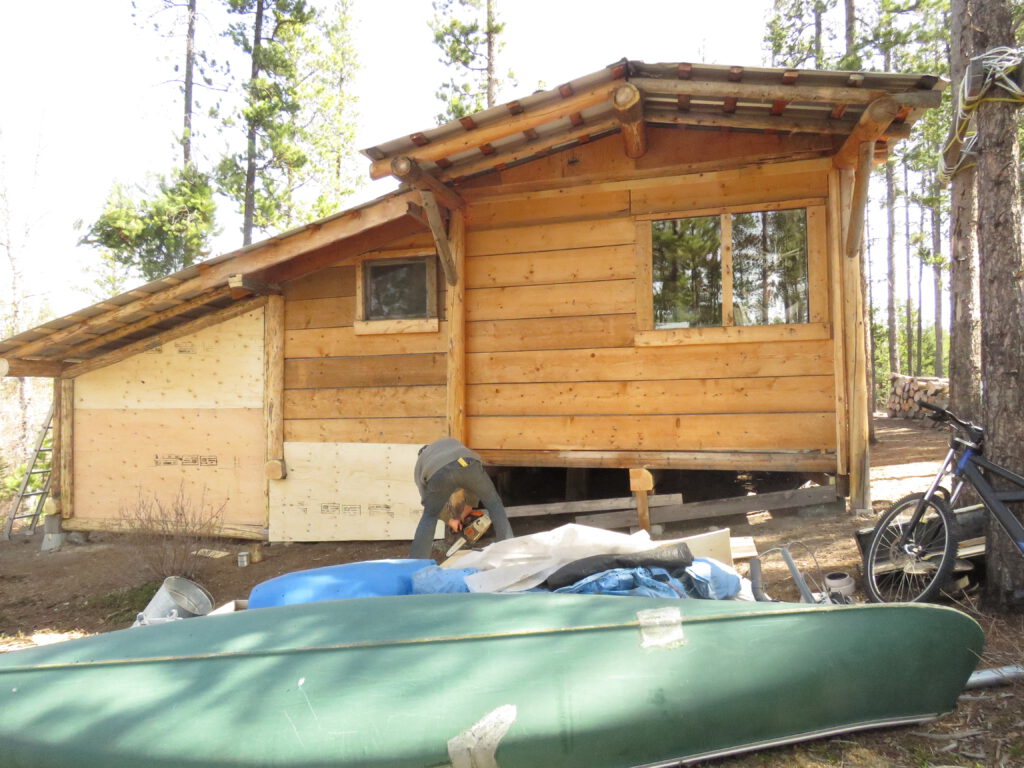
In the mean time, I was working on the garden. Previously, the rows had gone up and down, but I planned to construct a different irrigation system that needed flatter rows – best was to change the rows so that they went across.
First job was to dig out all the established weeds. I was not able to work nonstop at this – I had to pace myself considerably. The size of the task was daunting and it seemed to take forever.
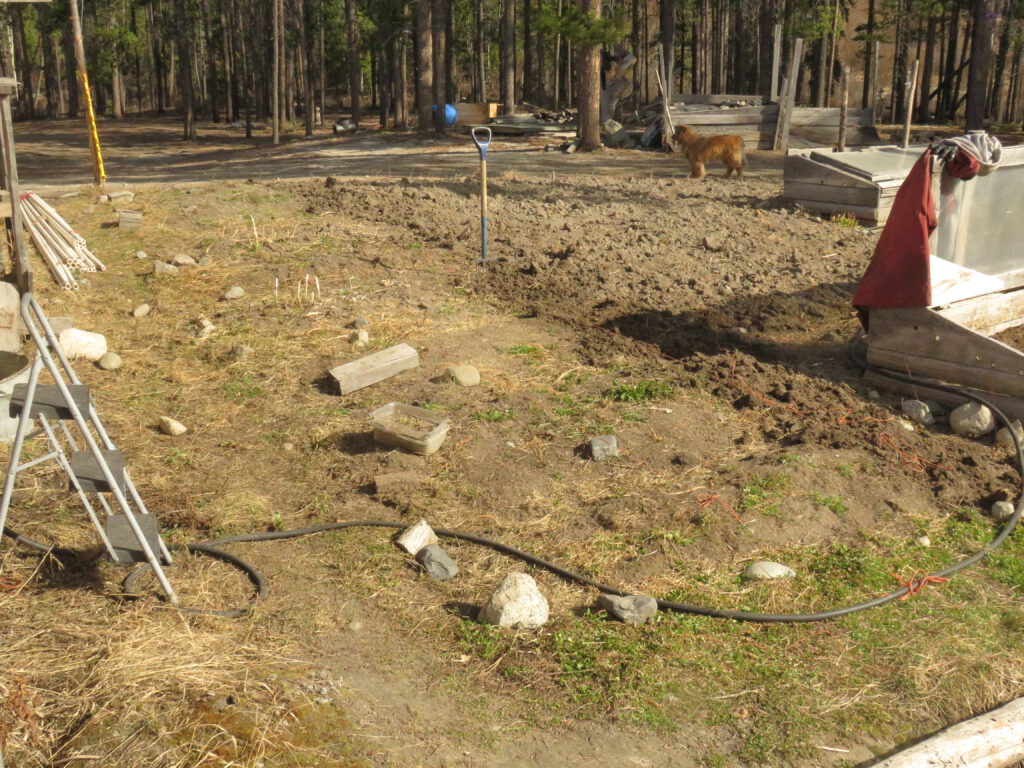
Next job was to try and make the rows level.
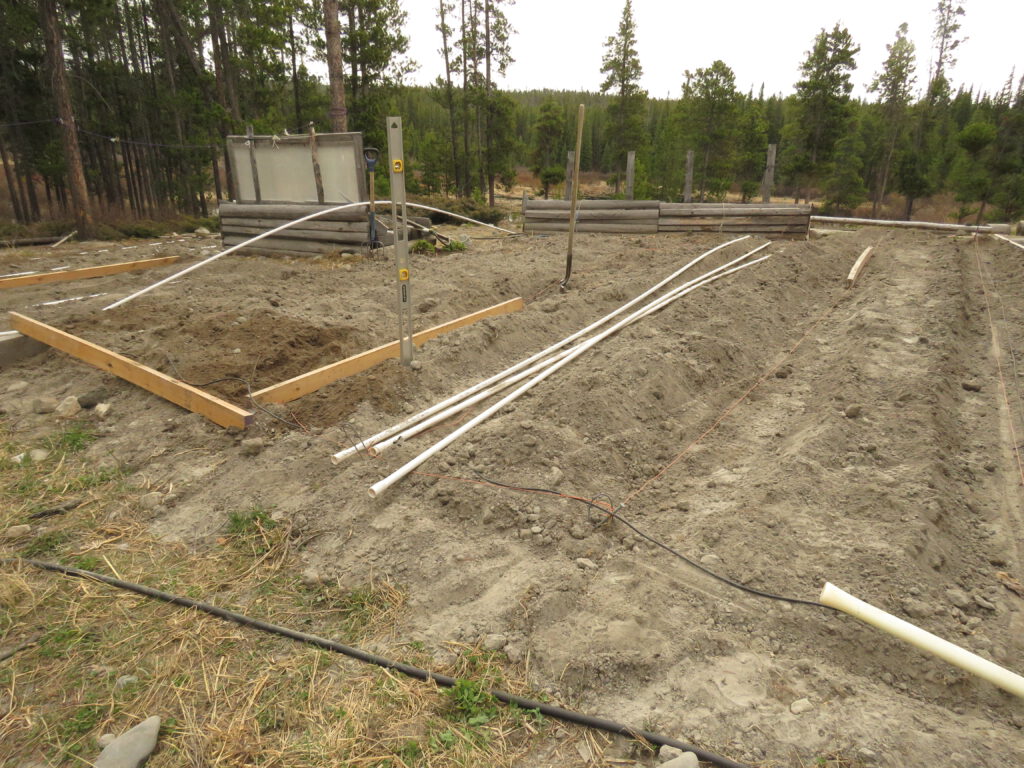
And dig in 29 wheelbarrow loads of manure. (The heap is in the background – the middle was still frozen solid.)
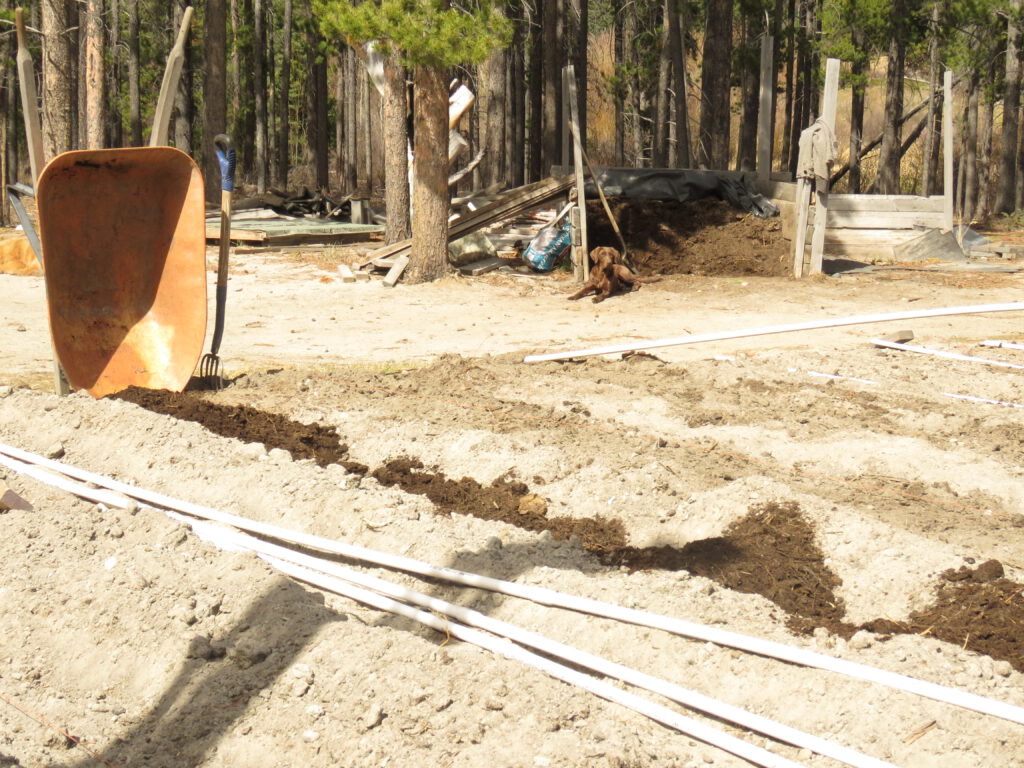
Then drill holes in the 3/4 inch pipe (I used the system in this link) and fit the whole thing together.
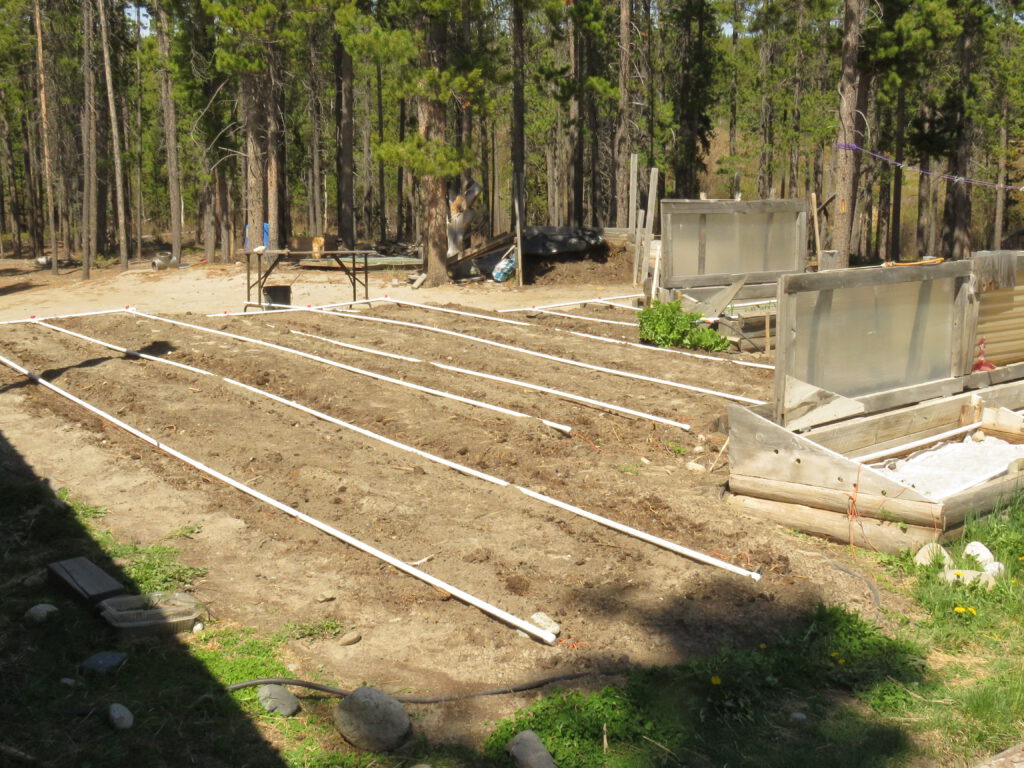
And finally, in late May, about 5 weeks after I first started digging, the garden is planted.
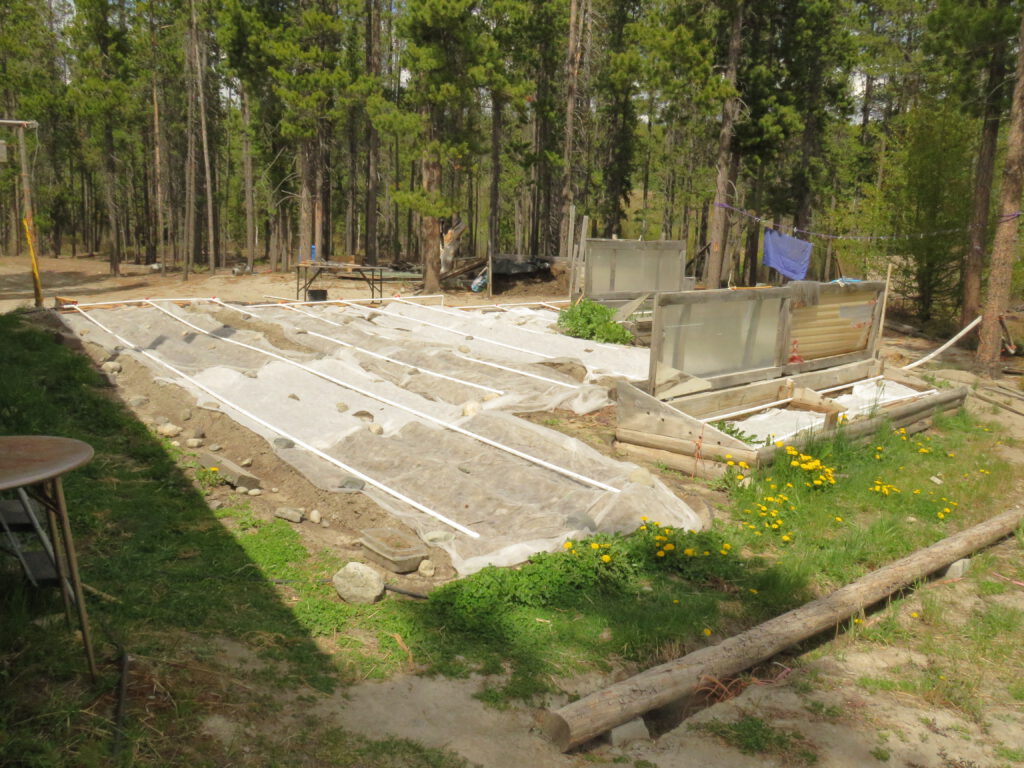
Only problem is – I have no water to run the irrigation.
This year my well is full. But when the pressure switch gets to the bottom of its range, instead of kicking in, it dies. I can start it again manually, and for the most part, the system keeps going for intermittent household use, but as soon as I turn the tap on continuously, it dies in as little as 2 minutes. Igor changed the pressure switch before he left, and we both ran up and down the basement steps numerous times to try and figure out what was wrong. It’s possible the pressure tank diaphragm is toast, but the tank is not exhibiting the usual symptoms for that. And a new one would cost over $700. Unfortunately the nearest expert is in Williams Lake – it would cost a fortune to have a tech come out here. No one can give me any suggestions by phone. Because of the relentless strong winds and lack of rain, the country has become very dry so I have to water somehow. At the moment, I am using the fire hose – the kind beavers are keeping my pond overflowing. But once the plants get big enough to eat I prefer not to spray them with beaver water and I will have to set up the tanks and pump from the river again as I did last year – another heavy and tedious job without volunteers.

Always a delight to read your posts and marvel at your photos.
I sympathize with you on your chore of keeping your vegetable garden watered this year! Keep strong!